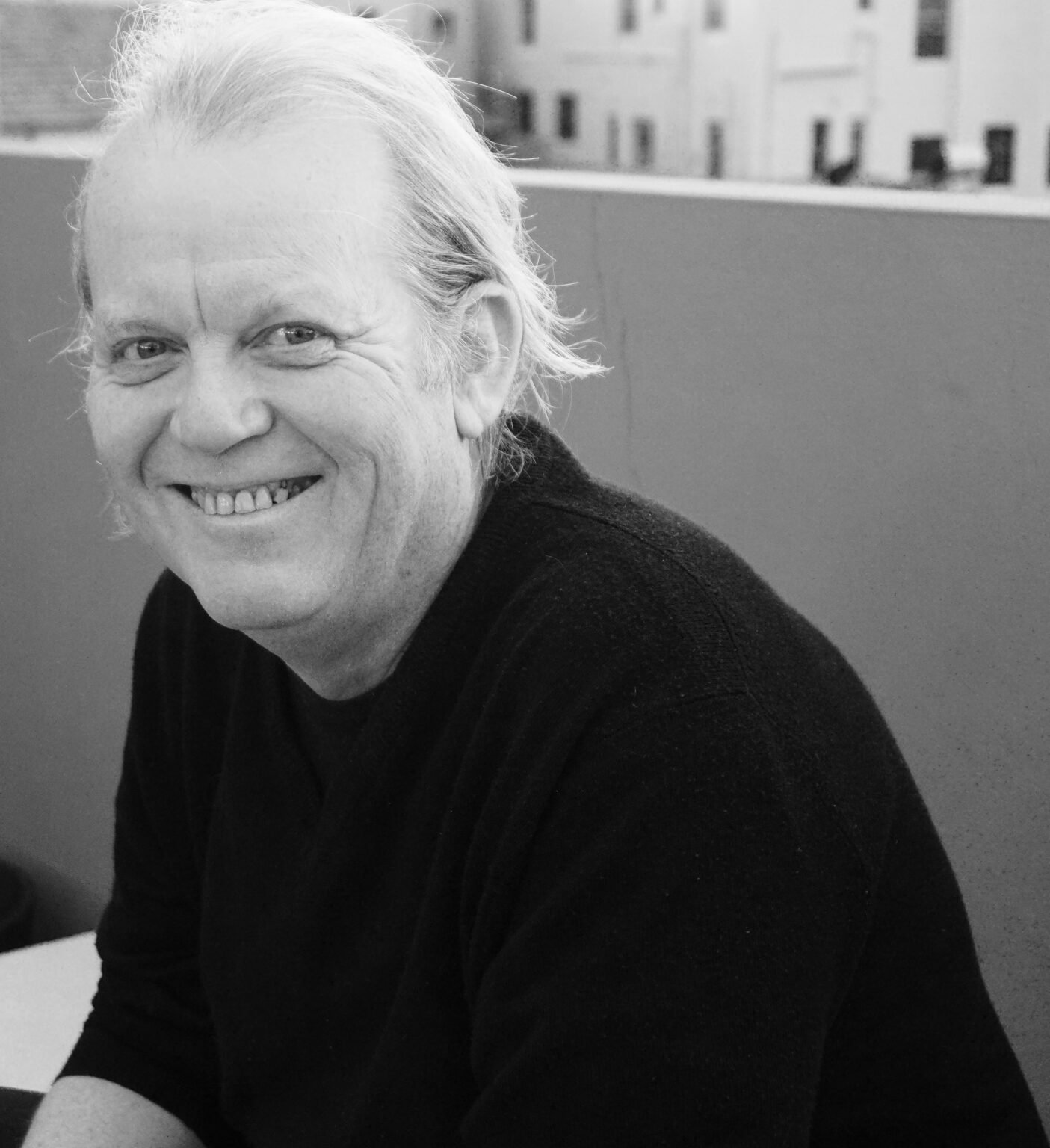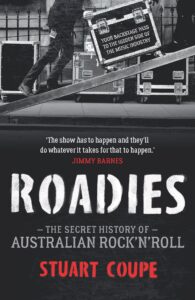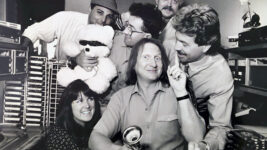Subscribe to CX E-News
Reviewed by Julius Grafton.
Old school roadies did heaps of drugs, drove drunk and crazy, knew how to fight, and would probably root your brother or sister, right? Well, yes, and the downside was crap money, rip-offs, premature deafness, or lung cancer from excessive venue smoke. Many have killed themselves since.
When Stuart Coupe said he was writing a book called ‘Roadies’ I had two overlapping thoughts. Would the people he needs talk to him? In my long ‘second career’ writing for CX Magazine I’ve met plenty of crew who are so self-depreciating they live like they look – behind the scenes. Many declined to be involved in stories I wrote over the years.
Then I wondered who would be interested in such a book? There are only so many “Barnsy on the turps” and “sex, drugs, rock and roll” stories and they all start to meld into the previous one. These R-rated war stories are not dinner table anecdotes, or so I thought.
Well he did it, and on launch held an event in Sydney and one in Melbourne, which were sell-outs. Now the book is selling like hotcakes across the land – at airports, bookstores, online, and even in Big W. Coupe must have been surprised at the interest because suddenly he was on radio and TV everywhere talking about it. A buzz was created, so what about the book?
Over 41 chapters you meet 50 mostly veteran crew, those who survived the very real excesses of drugs, booze, violence, and guns. It’s highly factual and cross checked, with Adrian Anderson and Howard Freeman credited for much of that. They are veteran crew approaching 70 years old now, and pivotal members of the Australian Road Crew Association, which in part inspired Coupe to write the book.
Coupe was there too, through the foundation days of Australian music as a band manager, publicist and promoter, so he already had a fair idea about the subjects of his book. He just needed to get all the right people on the record. He would spend hours with his recorder switched on, drawing people out. Then he would spend many more hours transcribing the rants, raves, and road stories. Lord knows how many hours – many hundreds – went into discarding the wrong, the defamatory, and the plain boring.
You’ll meet many colourful survivors along with some generous tributes to the departed, especially Jands leader Eric Robinson, who is portrayed fondly and with honesty as the most significant player in the Australian live production industry to date. Also as being equal parts arrogant, rude, funny, and brilliant. He features throughout the book in name and in deed. The role of Jands as the number one supplier of production before 2000 is well balanced across the book.
This is a collection of separate chapters that are each a story of a person, hopping all over the timeline – not an orderly sequential history – and it doesn’t pretend to be. There are plenty of people missing who probably should be there, and no real discussion of the many production suppliers of sound, lights, trucks and staging other than Jands. To write a history book that balanced everything across the era would be possible but expensive and it would not be a popular $30 book like ‘Roadies’!
The spectacular rise and fall of Gerry Georgettis is covered with a short chapter of facts, avoiding hyperbole that would have been easy to stretch out. I would have milked this one, but Stuart probably decided he didn’t need to. Gerry’s crime and remorse that lead to his sensational headline death on a United Airlines flight are offset by his substantial contributions to the industry in the decades prior.
Bad deeds abound, and the dog eat dog world is laid bare like road kill. The bigger the band, the worse the deal some of the crew dished up on the support band. Nailing the drum kit down to limit their stage space (Midnight Oil) or giving them a few front lights only (Men At Work). The book says this was the invention of the crew boss and not the bands, confirming my frustrated theories about this at the times it happened to me.
The Things That Happen
Support bands were fodder. The headline crew would wind back the subs by turning down the crossover or, if the sound dude was in on it, the sub amps. Squeezed the space, leaving the main band drum kit and riser in place. Give them 12 lights. Compressor-limit the PA. And treat the support crew as crap. (Thanks, dickheads, I remember you still after 35 years….)
The Bad And Mad
Most of the 50 or more crew interviewed emerge as enthusiastic, passionate professionals who own their mistakes. A handful are confirmed as violent and irrational people you wouldn’t want to sit next to on a bus. A theme from Stuart’s interviews with them is that they think their aggression was completely necessary to get the show on the stage. It was unchecked; bands and managers happy to let a psychopath blaze their trail like a demented rogue soldier who liked to maim with pain.
Not discussed in the book was the enormous chasm between ‘straight’ society in the 60s and 70s and the new ‘long hair music’. If you look at pop star photos such as Billy Thorpe and John Farnham, they switched from suits and Bryl Cream to casual wear and grew their hair around 1970. Police and venue attendants looked down on bands and crew – the generation gap was a canyon. This brought out the need (in some) to push through resistance.
Some of the guys (there are three female crew also interviewed, which at a ratio of 47 males is approximately correct for the decades before this one) boast of gun use way more than I remember from my first decade as a professional. I started in 1974 with Zapco Lightshow and went off the road in 1984 with Graftons Sound and Lighting in Sydney. It is true that gun laws were very relaxed, and we did readily buy gun powder for stage pyros at any of dozens of gun shops around the city.
Seems like almost everyone except me smoked weed and took speed, then coke, some admitting to moving on to smack. The effects and the drawbacks are common through the 300 pages. It’s sad and true that many of the groupies who also feature heavily were getting high and dishing out drugs to get favours. One thing not discussed was the prevalence of syphilis and other sexual diseases of this pre-AIDS era. Many crew made more than one visit to the Blue Light Clinic for treatment.
Relationship issues are a common theme, with one guy almost whimsical about his girls from each city, and his Penthouse Pet (September 1981). His chapter is very lucid as to the technology – and the struggles to get enough power for the lighting rig – with the crew culture. He thinks a lot of girls attracted to the scene found the crew way more accessible and down-to-earth than the rock stars. He certainly punched above his weight, speaking more about sex than drugs.
But the book wrongly characterises loyal girls as ‘groupies’. Most were not – they were ‘band girls’ – or just plain fans. I wasn’t partaking of the limited – and it was a fringe thing – ‘groupie’ buffet at the time. I killed time with plenty of girls at gigs, and they were not out for sex. They were simply just people who liked the bands.
The insane monotony of the road is a common complaint through the book, and again most crew smoked, drank, and took whatever they needed to get the truck across the country on roads that now are bypassed or upgraded. I confess here to using a bottle of Southern Comfort to get my truck to Melbourne. Bricks or sticks held down the accelerator across the Hay Plain, feet up on the dash. We knew the Hume and the Pacific Highways, the narrow bridges and level crossings and the truck stops with ‘hundred mile coffee’ and those memories are nothing like today’s multi lane motorways.
Working For Money
A real common theme echoed by a couple of young crew from the decade who Stuart has featured for some sensible balance is that the work is competitive. The camaraderie of a touring crew dissipates towards the end when everyone knows they are competing for the next tour.
Crew pay is crap unless you are a strategic smart dude with access to working overseas. One of these is Motely, whose chapter mostly talks his current decade as the lighting director for Kiss. Several like him did and have balanced out the supply and demand equation to work the stages of the world and strangely they don’t boast about guns, chicks, and speed either.
There’s not too much about rip-offs which were common when cheques were inclined to bounce and the mail was slow. The phenomenal bags of cash that were counted out in the pub or club manager’s office after a sold-out gig were outside of the view of the crew. I remember the tour manager counting the stack as the drug dealer stood next in line. As a production supplier I was in that line and wasn’t going to miss out.
Before GST and ABNs and random breath testing and AIDS you could work under any name and the many and varied nicknames were all that you would know someone as. The various Pigs, Bears, Saucys, and Fishes all blur together until a band needed crew to tour overseas when real legal names emerged for those who were not on the run.
Crime, drugs, sex, and rock and roll were all close bed fellows in the glory days of Australian rock music. The book charts the rise from the late 1960s to the peak years of the 1980s and then the decline in the 90s and along with it the uptick of mental and physical health issues of most of the fifty crew through the pages.
Fortunes were made from music but not by these guys. Most are now on some kind of pension, many have severe issues and some are at risk of suicide. In a sobering gesture the book lists an ‘In Memorium’ of deceased crew and details the disproportionate representation of suicide across the crew community and the broader entertainment industry.
Coupe’s book closes with a nice touch – the story of Sophie Kirov, a tour manager in her 20s who is blissfully unaffected by history and optimistic and positive about the music industry. She thinks women are becoming more prevalent across the technical side of the industry which today offers a professional and fast-moving career.
The drugs, hookers, guns, boozing and brawling are no longer a front-line feature of a career that one required only the ability to fight your way out of a pub on your unwritten resume – because there were no resumes. Today’s crew need a basket of training and experience with interpersonal skills to navigate the complexities of the industry, and thanks to the ‘Me Too’ movement can expect not to be called out as a ‘chick’ or a ‘faggot’.
Humour and passion are still major crew attributes as we move into a highly automated digitised world of immersive audio with sets that are covered in ultra-high resolution video. Production values have never been higher, and risks have never been better managed in an era where a guy with a guitar like Ed Sheeran can tour Australia for a month and take home $40 million dollars!
Roadies is a true life distillation of a society discovering a new art form when black and white TV gave way to colour, and big explosive audio became tourable. AM radio was swamped by FM, and with some added hair, pyro, and sequins, hundreds of charting bands emerged from suburban garages and stormed the nation, delighting their generation who were set free from the boring past.
- Roadies, by Stuart Coupe. Hachette Australia. RRP $31.99
- FREE PRINT COPY for subscriptions to CX Print, 2 years or longer. Go to https://www.cxnetwork.com.au/plans/digital-access/
Subscribe
Published monthly since 1991, our famous AV industry magazine is free for download or pay for print. Subscribers also receive CX News, our free weekly email with the latest industry news and jobs.













